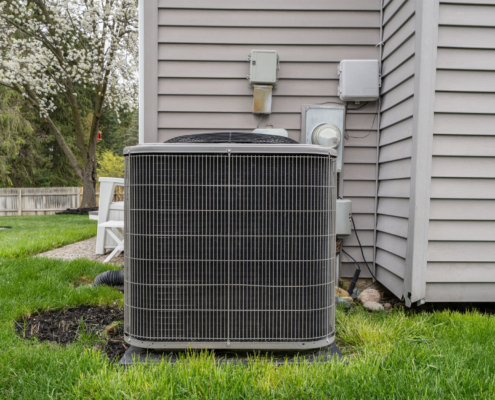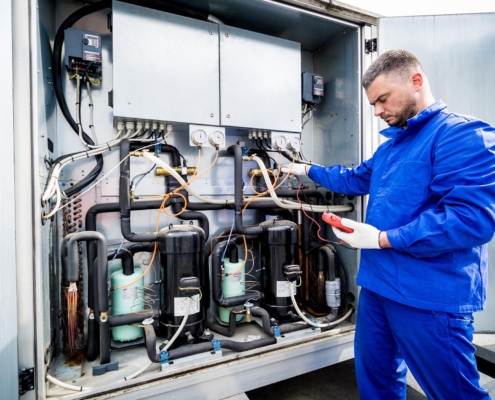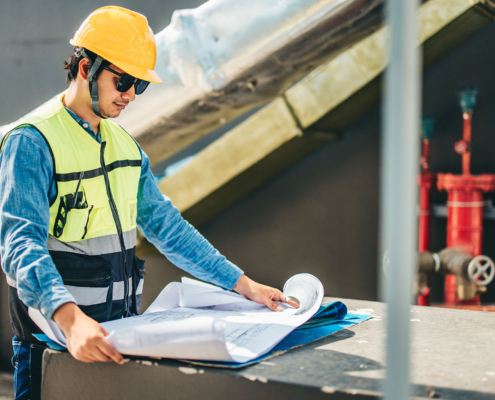 https://sammechanical.com/wp-content/uploads/2025/05/DIY-Residential-HVAC-Care-vs.-Hiring-a-Professional-Which-Is-the-Right-Move.jpg
1250
2000
AbstraktMarketing
/wp-content/uploads/2024/01/sam-logo-crete-300x154.png
AbstraktMarketing2025-05-21 09:33:182025-05-21 15:46:19DIY Residential HVAC Care vs. Hiring a Professional: Which Is the Right Move?
https://sammechanical.com/wp-content/uploads/2025/05/DIY-Residential-HVAC-Care-vs.-Hiring-a-Professional-Which-Is-the-Right-Move.jpg
1250
2000
AbstraktMarketing
/wp-content/uploads/2024/01/sam-logo-crete-300x154.png
AbstraktMarketing2025-05-21 09:33:182025-05-21 15:46:19DIY Residential HVAC Care vs. Hiring a Professional: Which Is the Right Move?Understanding When It’s Time for a Commercial Heating Replacement
Commercial heating replacement is a significant investment for any business. Hence, understanding when it is the right time for replacement, acknowledging the signs of a failing heating system, and considering the age and efficiency of your current system are all crucial factors. In the following sections, we delve deeper into these aspects, helping you make an informed decision about your commercial heating system.
Recognizing the Signs of a Failing Heating System
A properly functioning heating system is vital for commercial buildings to maintain a comfortable and productive environment. However, heating systems inevitably wear down over time. Being attentive to signs of a failing system can help facility managers identify problems early and take action before they become emergencies. Here are some common indicators that a commercial heating system may need replacement.
Constantly Increasing Utility Bills
If your business’s heating bills keep going up despite minimal changes in facilities or operations, your HVAC system may need to be fixed. Old or damaged components like heat exchangers, burners, and ductwork can reduce efficiency. Have a technician evaluate your system’s performance.
Uneven Heating Across the Workplace
Hot and cold spots in different areas of your building can indicate issues with ductwork, airflow, and your system’s distribution. This uncomfortable inconsistency wastes energy as the system works harder to heat cooler areas. An assessment can identify any leaks, blockages, or damaged ducts.
Frequent System Repairs and Breakdowns
Frequently needing heating repairs like igniter replacements, motor repairs, and thermostat recalibrations is a red flag. Once systems reach 15 to 20 years old, breakdowns become more common as parts wear out. Repair costs often exceed replacement at this age.
Considering the Age of Your Commercial Heating System
Predicted Lifespan of Common Commercial Heating Systems
Most commercial heating systems are designed to last 10 to 20 years with proper maintenance. Furnaces typically last 15 to 20 years. Boilers may function even longer, often beyond 20 years. Absorption chillers have a 15- to 25-year lifespan. The age of your current system is an essential factor when deciding whether replacement is needed.
Assessing Efficiency and Performance in Older Heating Systems
Even with maintenance, system efficiency tends to decline with age. Have an HVAC contractor measure your older unit’s efficiency using AFUE ratings for furnaces and boilers. They can also assess airflow, duct sealing, and overall system performance. Comparing results to new systems helps determine if replacement makes sense.
Modern Advancements in Commercial Heating Technology
New heating systems offer significant efficiency and performance improvements over older models. Upgrading to modern units like high-efficiency furnaces, boilers, and heat pumps can significantly reduce energy costs. Advanced features like zone control, smart thermostats, and performance monitoring also help optimize operations.
SAM Mechanical has the experience to handle your building’s commercial heating installation, replacement, and repair needs.
Analyzing the Costs Vs. Benefits of Commercial Heating Replacements
When a commercial heating system starts to show signs of age and declining performance, facility managers face an important decision on whether to repair, replace, or do nothing. Conducting a cost-benefit analysis is crucial to determine if replacement is the right course of action.
There are several factors to consider when weighing the costs versus benefits of replacing an aging commercial heating system.
Conducting a Cost-Benefit Analysis
To perform a cost-benefit analysis, start by gathering data on the current heating system’s age, maintenance records, energy efficiency rating, and annual operating costs. Compare this to the expected lifetime, maintenance needs, efficiency ratings, and projected energy costs of a new, energy-efficient replacement system.
Be sure to factor in both the upfront capital cost of purchasing and installing a new heating system as well as the long-term savings from reduced energy bills. New systems with advanced controls often have higher efficiencies and lower operating costs.
It’s also important to consider costs associated with downtime and tenant discomfort if the current system fails unexpectedly. Reactive repairs tend to be more expensive than proactive replacement before failure occurs.
Benefits of an Energy-Efficient Commercial Heating System
Upgrading to an energy-efficient heating system provides multiple benefits beyond cost savings on monthly energy bills. High-efficiency systems circulate heat more evenly, improving comfort for tenants by reducing fluctuations in temperature throughout the building. The even distribution of heat eliminates drafts and hot or cold spots, which can be annoying distractions. This consistent indoor climate creates a better overall environment for tenants to live and work comfortably.
Advanced digital controls on new high-efficiency systems allow facility managers to easily adjust temperatures according to occupancy schedules and energy usage patterns. Thermostats can be programmed and optimized to further reduce energy waste and costs, especially during unoccupied hours like evenings and weekends. The ability to fine-tune the system provides more opportunities to realize energy savings.
Replacing aging, inefficient equipment before failure occurs also enhances overall system reliability. With proactive replacement of components before they break down, there is less risk of unexpected heating system failures that disrupt business operations and inconvenience tenants. A new system will likely experience fewer mechanical issues, minimizing costly downtime.
Overall, upgrading to an energy-efficient heating system is a wise investment that provides lower energy bills, increased comfort for tenants, flexible temperature controls, and improved equipment reliability. The upfront installation costs are recouped over time through energy savings and avoiding emergency repairs down the road. Maintaining an up-to-date system brings multiple advantages for both property managers and occupants.
Commercial Incentives and Rebates Available for Heating System Upgrades
Many utility companies and local governments offer generous incentives to commercial property owners who replace inefficient heating systems with new high-efficiency models. These rebates help offset the upfront capital expenditure of the system replacement. The rebate amounts will depend on the efficiency rating of the new equipment installed.
Work with a qualified HVAC contractor who is familiar with available incentive programs. They can advise on how to maximize rebates and choose equipment that qualifies for funding. The rebate application process generally requires submitting equipment invoices, efficiency verification paperwork, and other documentation. The HVAC contractor will assist with compiling and submitting the necessary rebate application materials.
Partner With SAM Mechanical for Your Commercial Heating Replacement
If you suspect it’s time to start planning for a commercial heating replacement, contact the experts at SAM Mechanical to request a quote.
Related Postings
 https://sammechanical.com/wp-content/uploads/2025/05/DIY-Residential-HVAC-Care-vs.-Hiring-a-Professional-Which-Is-the-Right-Move.jpg
1250
2000
AbstraktMarketing
/wp-content/uploads/2024/01/sam-logo-crete-300x154.png
AbstraktMarketing2025-05-21 09:33:182025-05-21 15:46:19DIY Residential HVAC Care vs. Hiring a Professional: Which Is the Right Move?
https://sammechanical.com/wp-content/uploads/2025/05/DIY-Residential-HVAC-Care-vs.-Hiring-a-Professional-Which-Is-the-Right-Move.jpg
1250
2000
AbstraktMarketing
/wp-content/uploads/2024/01/sam-logo-crete-300x154.png
AbstraktMarketing2025-05-21 09:33:182025-05-21 15:46:19DIY Residential HVAC Care vs. Hiring a Professional: Which Is the Right Move? https://sammechanical.com/wp-content/uploads/2025/02/Worker-inspecting-commercial-HVAC-unit-on-roof.jpg
1250
2000
AbstraktMarketing
/wp-content/uploads/2024/01/sam-logo-crete-300x154.png
AbstraktMarketing2025-02-25 14:34:152025-02-25 14:34:23The Top Commercial HVAC Solutions for New Hampshire Businesses
https://sammechanical.com/wp-content/uploads/2025/02/Worker-inspecting-commercial-HVAC-unit-on-roof.jpg
1250
2000
AbstraktMarketing
/wp-content/uploads/2024/01/sam-logo-crete-300x154.png
AbstraktMarketing2025-02-25 14:34:152025-02-25 14:34:23The Top Commercial HVAC Solutions for New Hampshire Businesses https://sammechanical.com/wp-content/uploads/2024/12/Worker-looking-over-plans-for-HVAC-upgrade.jpg
1250
2000
AbstraktMarketing
/wp-content/uploads/2024/01/sam-logo-crete-300x154.png
AbstraktMarketing2024-12-10 14:41:512025-05-21 15:50:03The Financial Benefits of a Commercial HVAC Upgrade
https://sammechanical.com/wp-content/uploads/2024/12/Worker-looking-over-plans-for-HVAC-upgrade.jpg
1250
2000
AbstraktMarketing
/wp-content/uploads/2024/01/sam-logo-crete-300x154.png
AbstraktMarketing2024-12-10 14:41:512025-05-21 15:50:03The Financial Benefits of a Commercial HVAC UpgradeAbout
For over three decades SAM Mechanical has provided New Hampshire with the highest quality HVAC, plumbing, and mechanical services.


